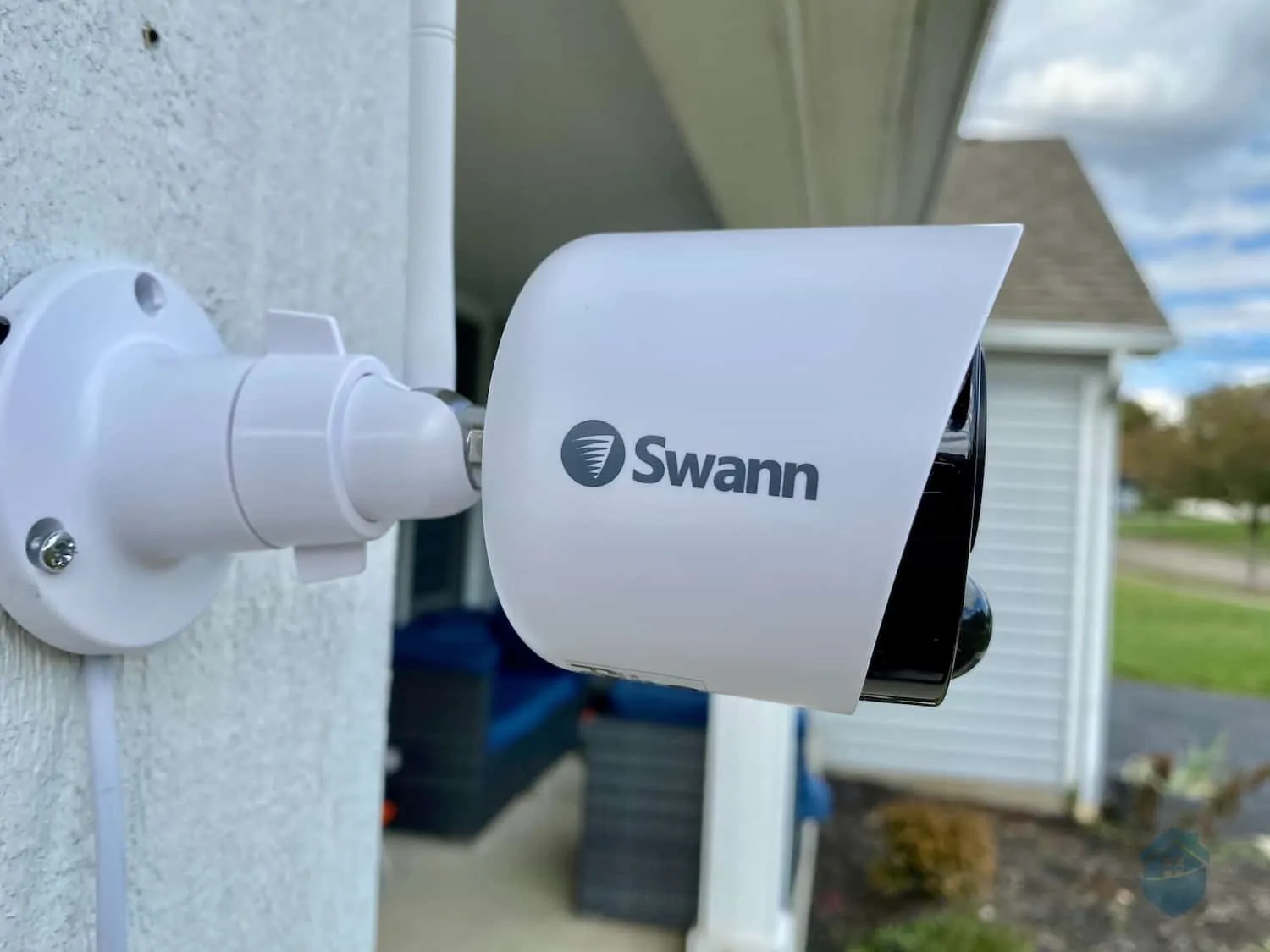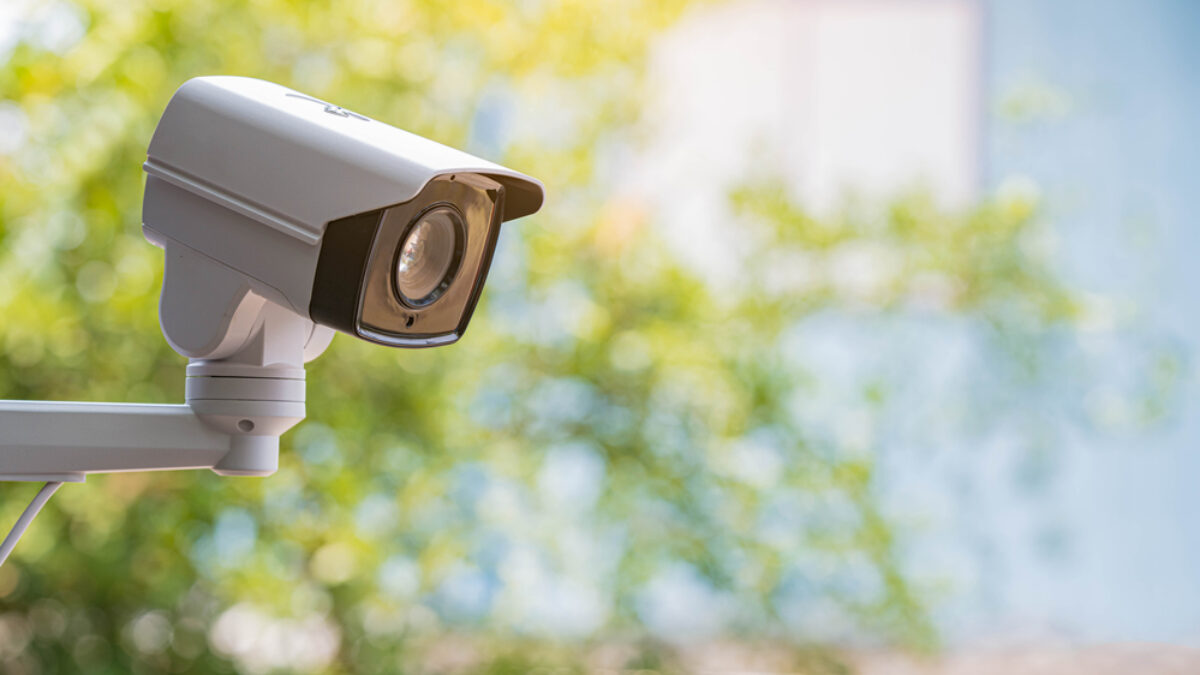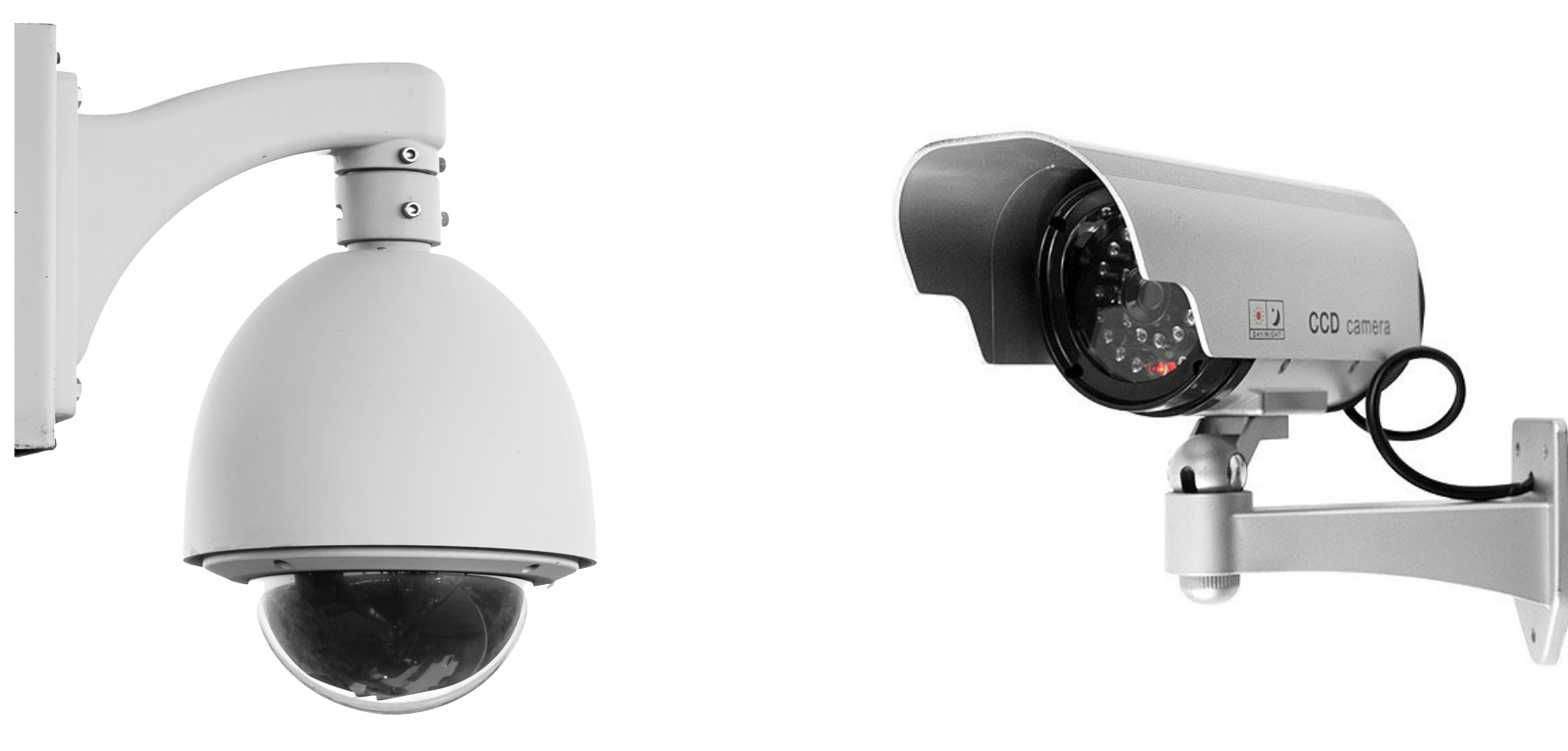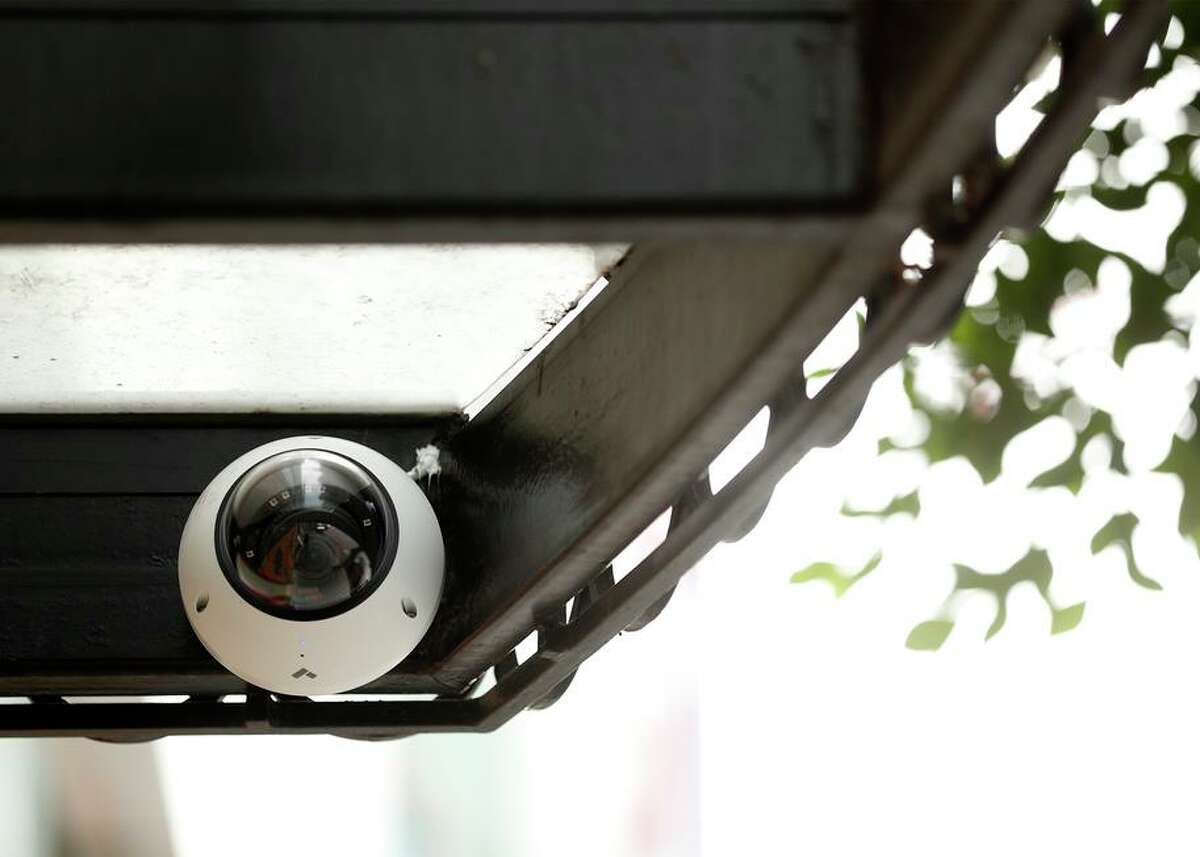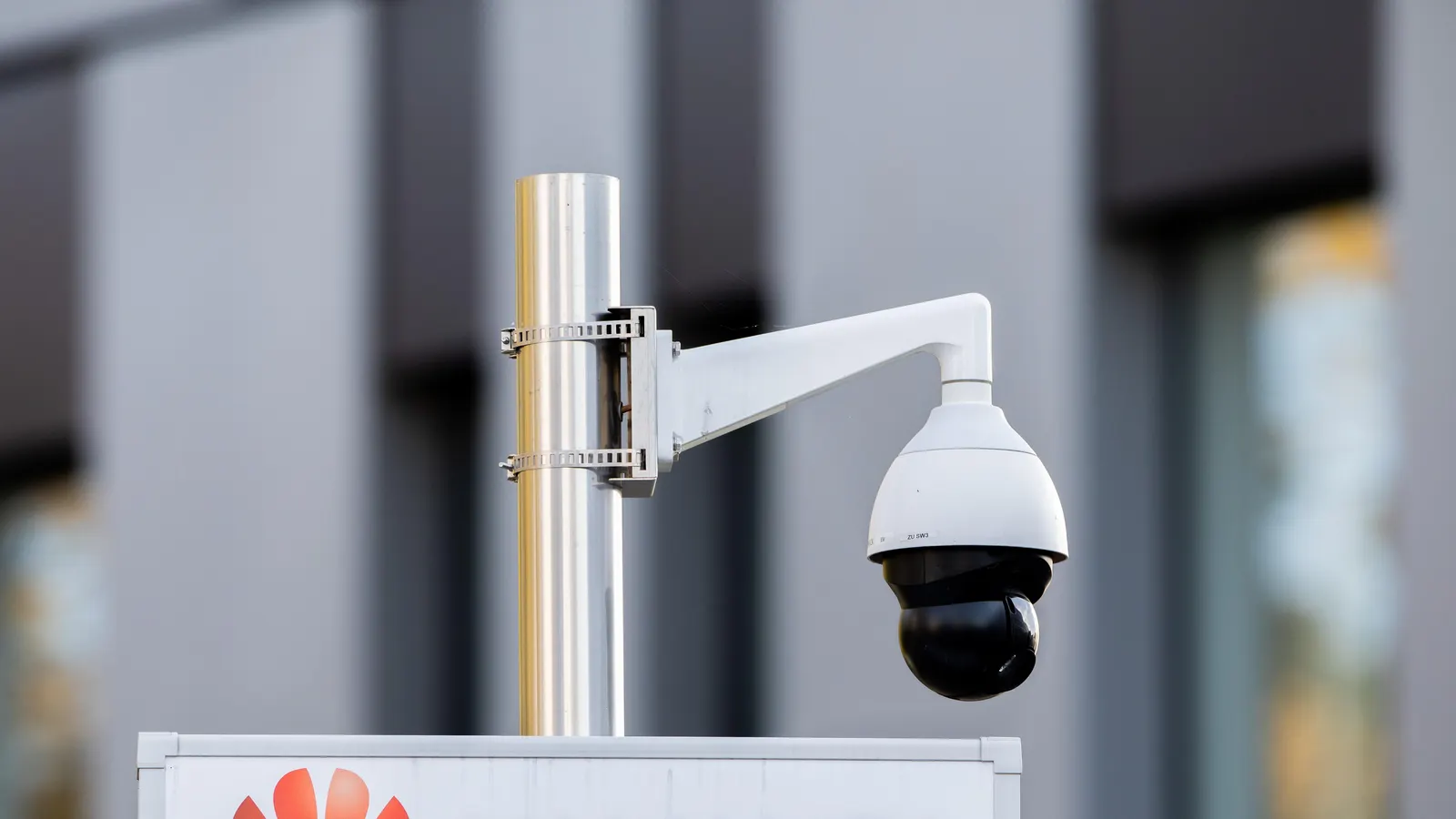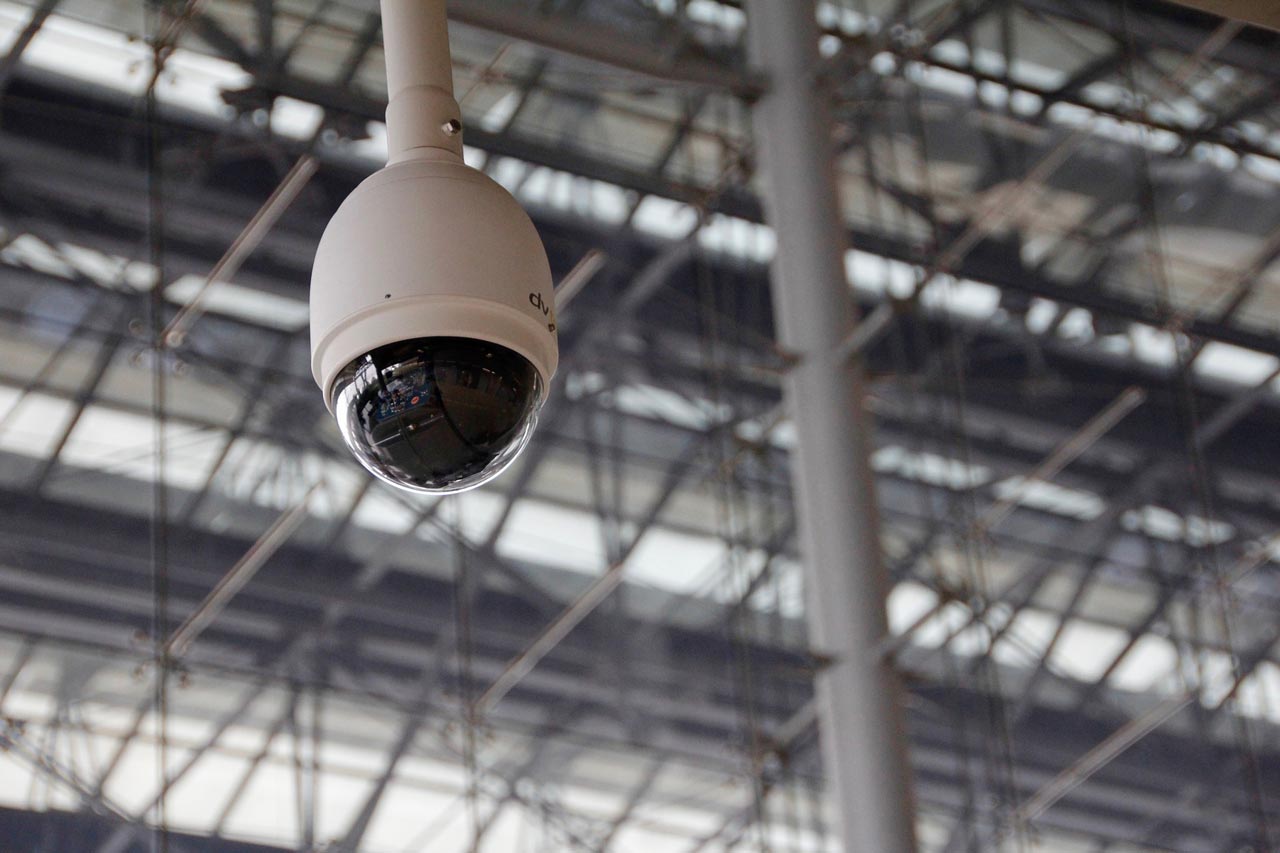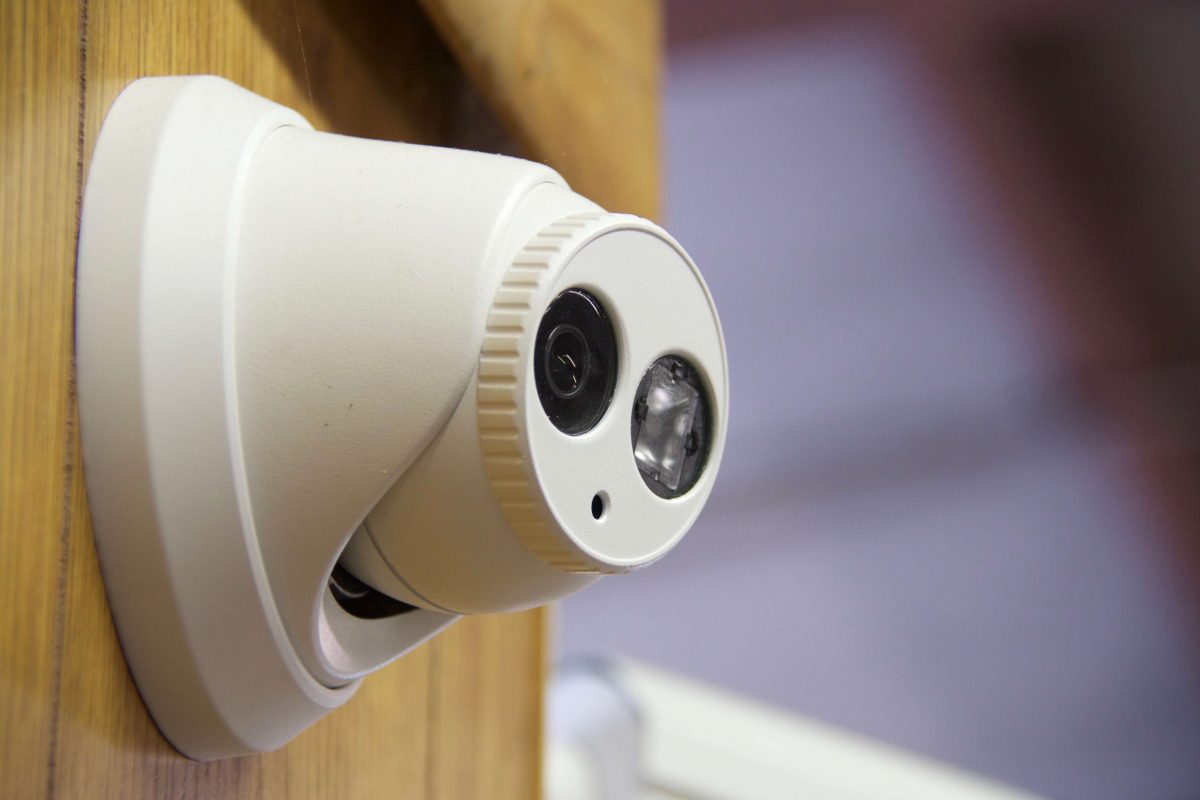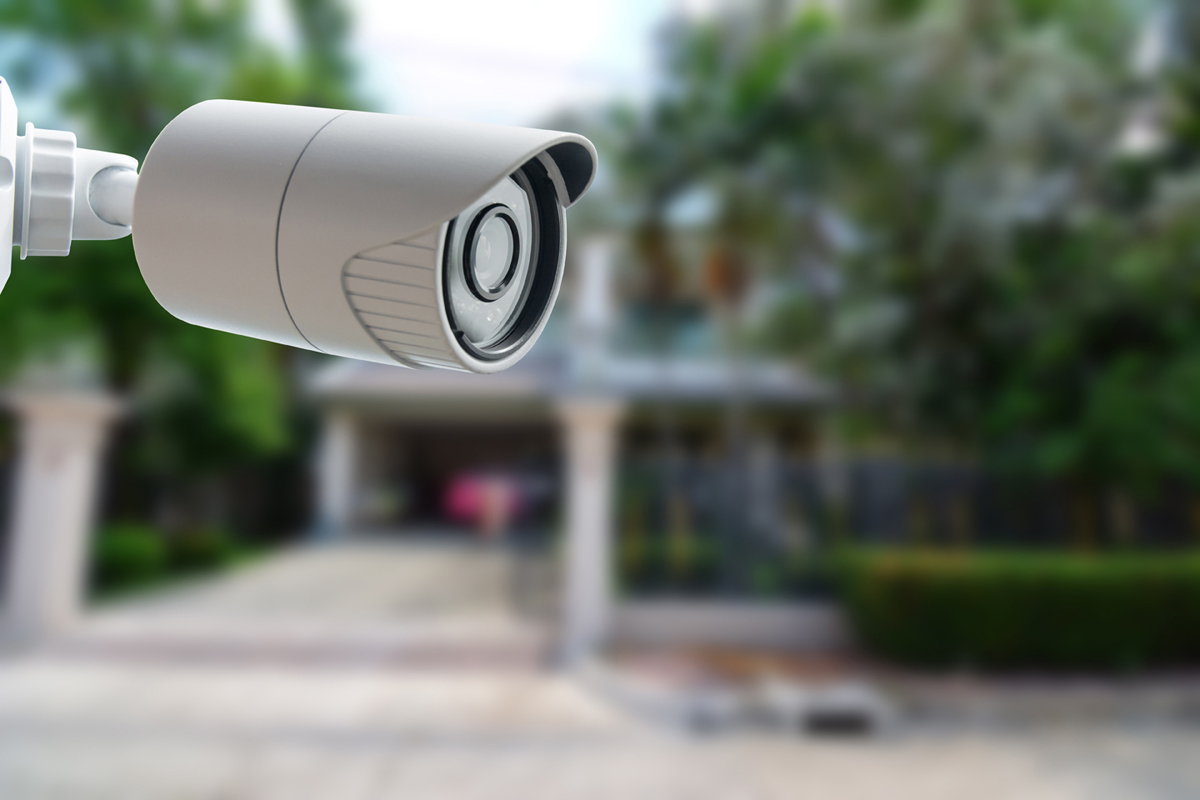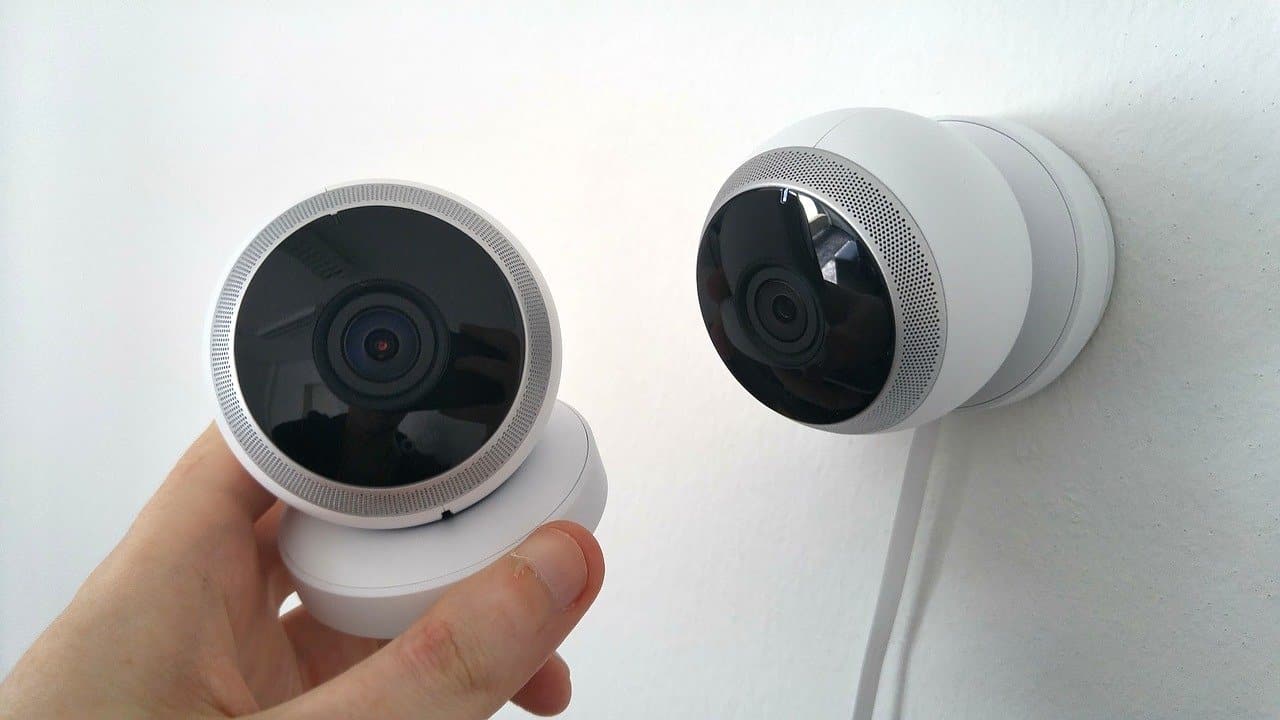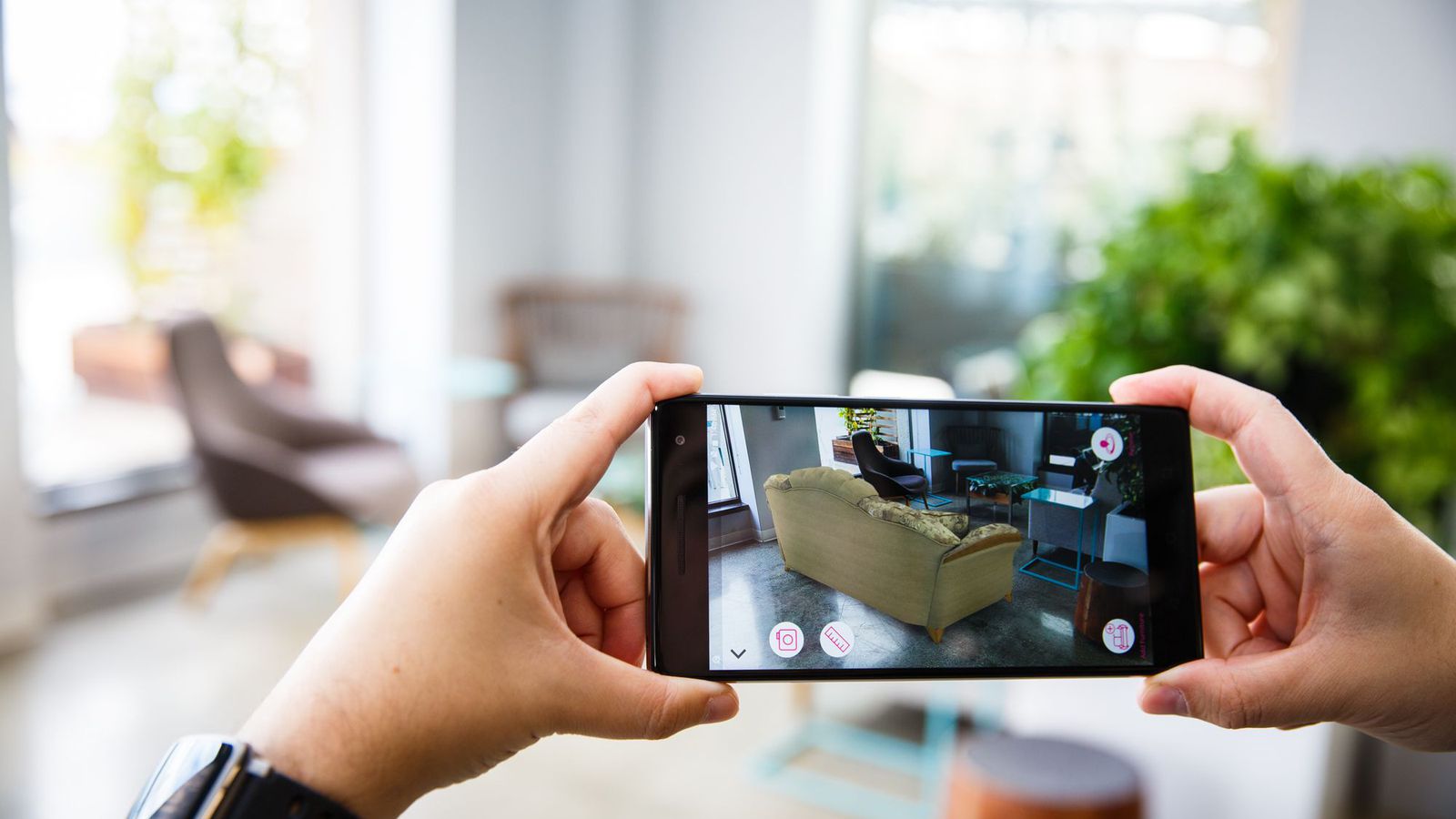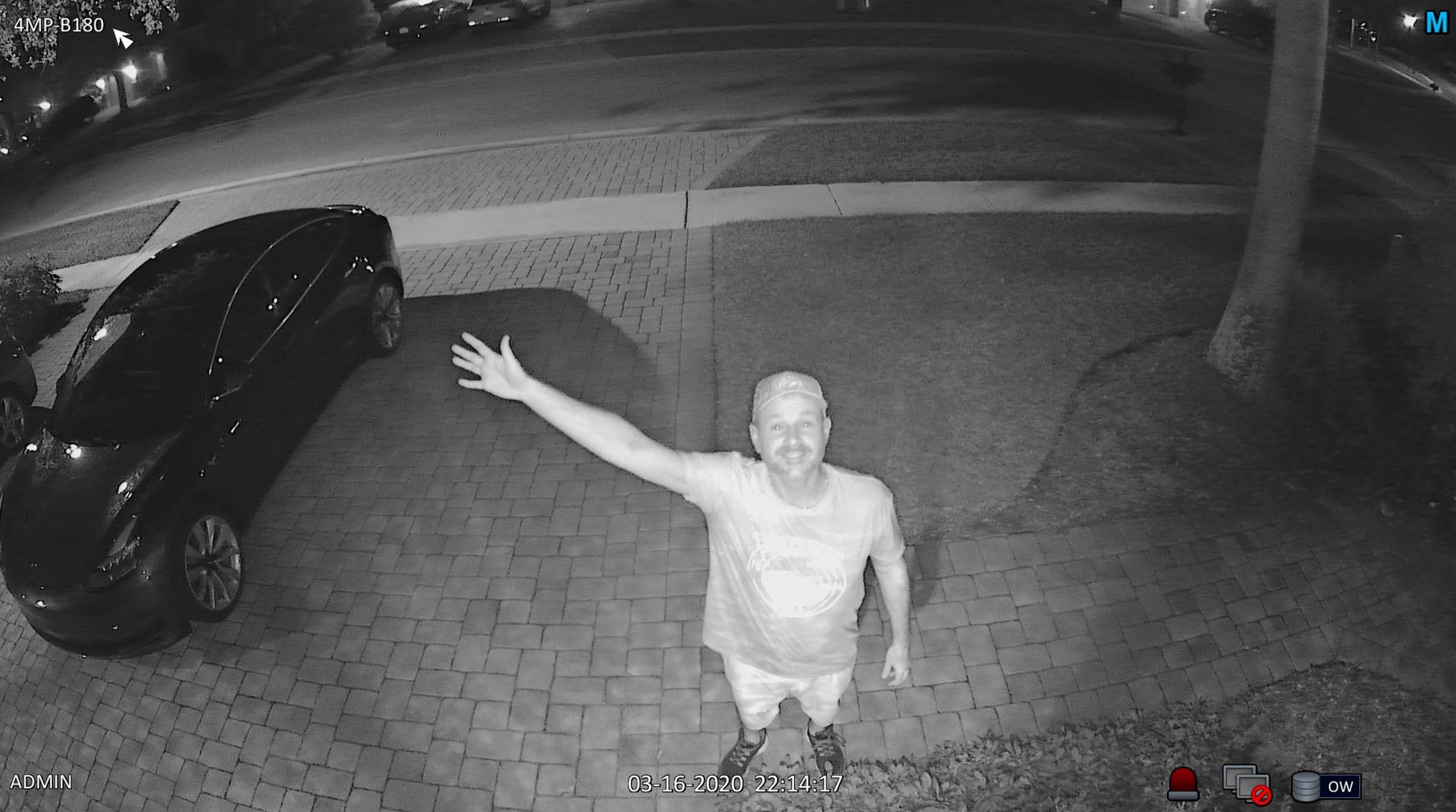Home>Home Security and Surveillance>How To Jam A Security Camera
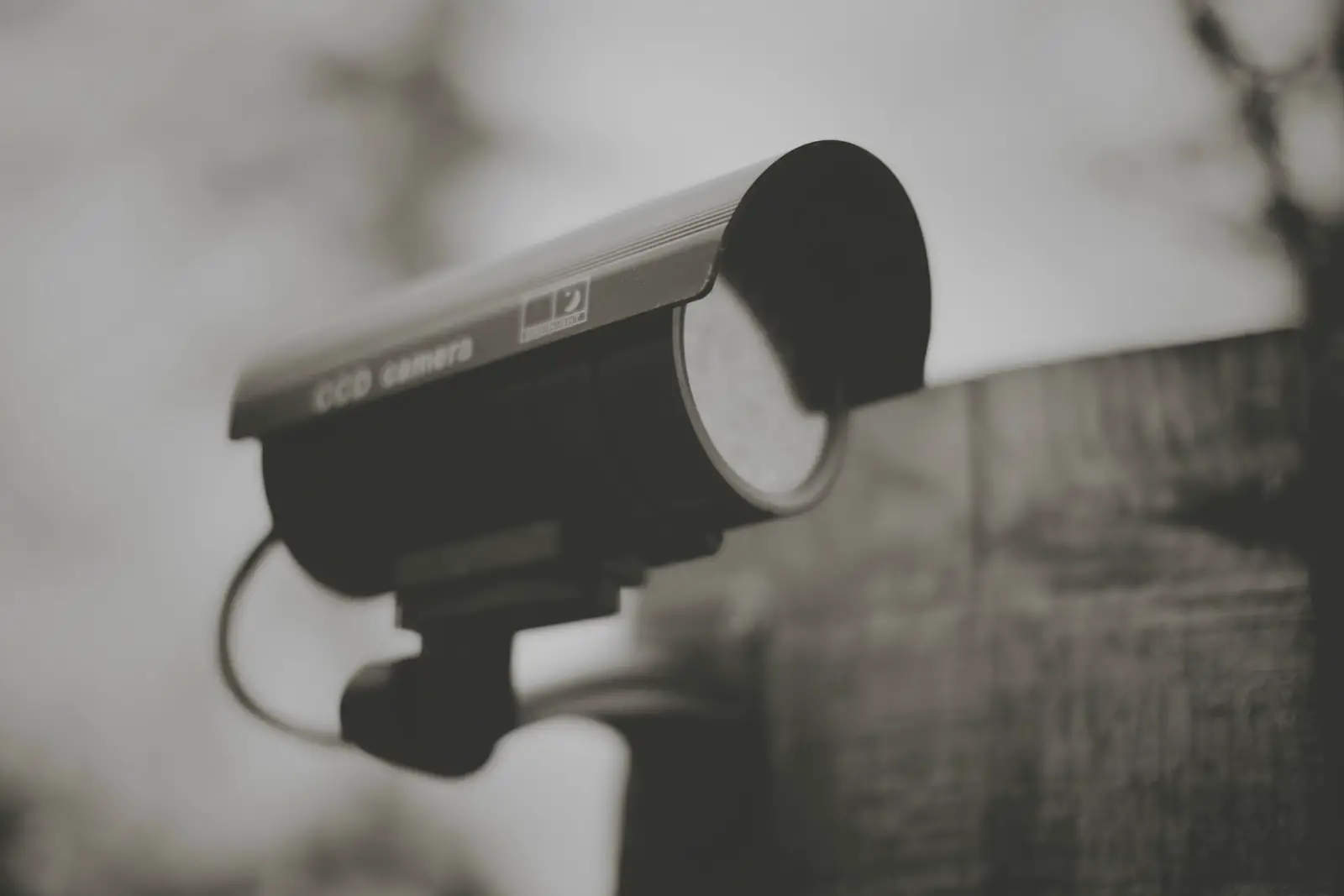

Home Security and Surveillance
How To Jam A Security Camera
Modified: August 23, 2024
Learn how to jam a security camera with our step-by-step guide. Protect your privacy and enhance your home security and surveillance.
(Many of the links in this article redirect to a specific reviewed product. Your purchase of these products through affiliate links helps to generate commission for Storables.com, at no extra cost. Learn more)
Introduction
Home security is a top priority for homeowners, and surveillance cameras play a crucial role in safeguarding our properties. These cameras provide a sense of security and act as a deterrent against potential intruders. However, there may be situations where individuals feel the need to disable or jam security cameras for various reasons. In this article, we will explore different methods of jamming security cameras and discuss the potential consequences and ethical considerations surrounding these actions.
Before delving into the methods, it is essential to understand how security cameras work. These devices capture and record video footage to monitor activity in and around our homes. They come in various types, including wired, wireless, and IP cameras. Security cameras are typically installed in strategic locations, such as entrances, driveways, and common areas, to ensure comprehensive surveillance.
While security cameras serve a vital purpose, there may be circumstances where individuals feel the need to disable or jam them. It’s important to note that interfering with someone else’s security cameras without consent is generally illegal and unethical. However, understanding the various methods of jamming can help increase awareness about vulnerabilities and assist in protecting one’s own privacy.
There are several methods available for jamming security cameras, each with its own advantages and limitations. These methods range from using wireless signal jammers to modifying the camera’s power source, disrupting the camera’s signal with LED lights, blinding the camera with infrared light, applying reflective materials, overexposing the camera’s sensor with laser pointers, utilizing GPS jamming devices, and even hacking into the camera’s system.
It is important to understand that attempting to jam security cameras can have serious legal consequences. Unauthorized interference with surveillance systems is considered a violation of privacy laws in many jurisdictions. Before considering any action that may interfere with security cameras, it is crucial to consult local laws and regulations.
In the following sections, we will explore each of these methods in more detail. Although the intent behind this article is to educate and raise awareness, it is important to remember that these techniques should not be practiced unlawfully or unethically.
Key Takeaways:
- Disabling security cameras without permission is illegal and unethical. It’s important to respect privacy laws and seek legal solutions for any concerns about surveillance systems.
- Interfering with security cameras can have serious consequences, including legal penalties and compromised public safety. It’s crucial to prioritize responsible and ethical behavior when dealing with surveillance technology.
Read more: How To Choose Security Cameras
Understanding Security Cameras
Before diving into the methods of jamming security cameras, it is crucial to have a clear understanding of how these devices function. Security cameras, also known as closed-circuit television (CCTV) cameras, are designed to monitor and record video footage of specific areas for security purposes.
There are different types of security cameras, each with its own features and capabilities. Wired cameras are connected directly to a recording device or monitoring station using cables. These cables transmit both power and video signals, ensuring a stable and continuous connection.
Wireless cameras, on the other hand, transmit video signals via a wireless technology, such as Wi-Fi or Bluetooth. They do not require physical cables for connectivity, making them easy to install and move around. Wireless cameras often rely on batteries or an external power source for operation.
Another type of security camera is the IP camera, which stands for internet protocol. IP cameras digitize video signals and transmit them over an internet connection. These cameras can be accessed remotely using a smartphone, tablet, or computer, allowing homeowners to monitor their property even when they are away.
Security cameras are typically placed strategically to capture the most important areas of a property, such as entrances, driveways, and backyard. They are equipped with lenses that determine the field of view and the range at which they can capture clear images. Some cameras have fixed lenses, while others offer adjustable lenses to focus on specific areas.
In addition to capturing video footage, security cameras may also have built-in features like motion detection, night vision, and two-way audio communication. Motion detection allows cameras to record only when movement is detected, conserving storage space. Night vision enables cameras to capture clear images even in low-light conditions, while two-way audio allows homeowners to communicate with people near the camera.
The recorded video footage from security cameras is often stored either locally on a recording device, such as an NVR (network video recorder) or DVR (digital video recorder), or in cloud storage. Stored footage can be accessed and reviewed later to identify any suspicious activity or incidents.
Overall, understanding the basic functioning and types of security cameras is essential to comprehend the vulnerabilities that can be exploited to jam or disable them. It is important to note that tampering with security cameras without proper authorization is illegal and unethical, so it is crucial to approach any actions related to security camera interference responsibly and within the boundaries of the law.
Methods of Jamming Security Cameras
While interfering with security cameras is generally illegal and unethical, it is important to be aware of the methods that can be employed to jam or disable such devices. Understanding these methods can help individuals protect their own privacy or identify vulnerabilities in their own security systems.
1. Using a Wireless Signal Jammer:
A wireless signal jammer is a device that disrupts the radio frequencies used by wireless cameras to transmit signals. By emitting a powerful signal in the same frequency range, the jammer effectively blocks the camera’s signal, rendering it unable to transmit video feed. However, it is important to note that using a wireless signal jammer is illegal in many jurisdictions, as it can interfere with essential communication systems.
2. Modifying the Camera’s Power Source:
One method of jamming a security camera is to tamper with its power source. By cutting power to the camera or interfering with the electrical supply, the camera will be unable to function. However, this method is typically detectable and may cause suspicion.
3. Disrupting the Camera’s Signal with LED Lights:
Certain security cameras rely on infrared (IR) light for capturing clear images in low-light conditions. By using powerful LED lights that emit strong IR radiation, it is possible to overwhelm the camera’s sensor, causing it to malfunction or produce distorted images.
4. Using Infrared Light to Blind the Camera:
Similar to the previous method, this technique involves using infrared light to blind the camera’s lens. By directing a strong source of infrared light towards the camera, it becomes difficult for the camera to capture clear images, rendering it ineffective.
5. Applying Reflective Materials to Conceal from the Camera:
Another method of disabling a security camera is by utilizing reflective materials. By strategically placing reflective objects or materials in the camera’s field of view, the camera’s lens will capture excessive glare and reflections, making it difficult to discern objects or people in the vicinity.
6. Using Laser Pointers to Overexpose the Camera’s Sensor:
Laser pointers can be used to overexpose a security camera’s sensor. By directing a concentrated beam of light towards the camera, it becomes flooded with intense brightness, causing the captured images or video footage to be washed out and unusable.
7. Utilizing GPS Jamming Devices:
Some security cameras rely on GPS systems for precise location tracking and positioning. Jamming the GPS signal can render these cameras unable to function properly. However, it is important to note that using GPS jamming devices is illegal in many jurisdictions, as it can interfere with essential navigation and communication systems.
8. Hacking into the Camera’s System:
This method involves exploiting vulnerabilities in the camera’s software or network infrastructure to gain unauthorized access. By hacking into the camera’s system, an individual can potentially disable or manipulate its functionality. However, it is important to note that hacking into security cameras is illegal and unethical.
It is crucial to emphasize that attempting to jam or disable security cameras without proper authorization is illegal and can have serious legal consequences. These methods are presented here for informational purposes only and should not be practiced without the consent of the camera’s owner or appropriate legal authorization.
Method 1: Using a Wireless Signal Jammer
One of the methods used to jam security cameras is by utilizing a wireless signal jammer. A wireless signal jammer is a device that disrupts the radio frequencies used by wireless cameras to transmit their signals. By emitting a powerful signal in the same frequency range, the jammer effectively blocks the camera’s signal, rendering it unable to transmit video feed.
Wireless signal jammers work by overpowering the camera’s wireless communication frequency, causing interference and disrupting the signal. The jammer emits a signal with a higher power level, overpowering the weak signal from the camera. This results in the camera’s signal being blocked or distorted, preventing it from transmitting video footage to the monitoring station or recording device.
However, it is important to note that the use of wireless signal jammers is illegal in many jurisdictions. These devices can not only interfere with security cameras, but also disrupt essential communication systems such as Wi-Fi networks, cell phones, and emergency communication channels. The use of signal jammers is considered a violation of federal laws and regulations in most countries.
Additionally, wireless signal jammers can have unintended consequences. They may interfere with vital emergency services, such as police or medical communications, which could potentially put lives at risk. Jamming signals can disrupt not only security camera systems but also legitimate wireless communications, causing significant disruptions and inconveniences.
It is important to emphasize that interfering with security cameras using wireless signal jammers is illegal and unethical. It infringes upon the privacy and security of others, and severe penalties can be imposed for such actions. Furthermore, using wireless signal jammers can lead to unintended consequences and may even jeopardize public safety.
If you have concerns about your privacy or the security cameras in your vicinity, it is recommended to explore legal and ethical alternatives. You can consult with local authorities or seek professional advice on how to address and mitigate any security concerns you may have.
Overall, while using a wireless signal jammer may seem like a viable way to disable security cameras, it is essential to recognize the legal and ethical implications. Interfering with security cameras without proper authorization is illegal, and the consequences can be severe. It is more prudent to focus on legal and ethical means to address any concerns related to security cameras.
Method 2: Modifying the Camera’s Power Source
Another method of jamming a security camera involves tampering with its power source. By modifying the camera’s power supply, it is possible to disable or render the camera inoperable.
Most security cameras receive power through an electrical outlet or through a power over ethernet (PoE) connection. Interrupting the camera’s power source can be accomplished in various ways:
- Disconnecting the power cable: If the camera is connected to a power outlet using a standard power cable, simply unplugging the cable will cut off the electricity supply, causing the camera to turn off.
- Disabling the power switch: Some security cameras have an external power switch or button that allows users to turn the camera on and off. Manipulating or disabling this switch can prevent the camera from receiving power.
- Faulty wiring: In some cases, it may be possible to tamper with the camera’s electrical wiring. This involves cutting or damaging the wires, interrupting the flow of electricity to the camera.
- Interfering with the power source: If the camera is powered through a PoE connection, it may be possible to disrupt the power supply by interfering with the Ethernet cable or the PoE switch.
Modifying the camera’s power source may be a simple and effective method to disable a security camera. However, it is important to note that this method is typically detectable and can raise suspicion. The camera may have backup power or battery capabilities, making it resilient to power disruptions.
It is crucial to highlight that tampering with security cameras without proper authorization is illegal and unethical. Interfering with someone else’s property and surveillance system is a violation of privacy laws and can lead to legal consequences.
If you have concerns or issues with security cameras in your vicinity, it is recommended to address them through legal means. Contacting the appropriate authorities or discussing the matter with the camera owner can help resolve any privacy or security concerns without resorting to illegal actions.
Remember, maintaining a responsible and ethical approach is crucial when dealing with security cameras. It is important to respect the privacy and security of others while addressing any concerns or issues that may arise.
Read more: How To Waterproof A Security Camera
Method 3: Disrupting the Camera’s Signal with LED Lights
Disrupting the camera’s signal with LED lights is another method used to jam security cameras. This technique takes advantage of certain cameras’ reliance on infrared (IR) light for capturing clear images in low-light conditions.
Many security cameras are equipped with IR LEDs that emit infrared light to illuminate the area being monitored. The camera’s sensor then captures the reflected infrared light, allowing for clear imaging in dark settings. By using powerful LED lights that emit strong IR radiation, it is possible to overwhelm the camera’s sensor, causing it to malfunction or produce distorted images.
To disrupt the camera’s signal using LED lights, one can shine a bright and concentrated source of infrared light directly at the camera lens. This flood of intense IR radiation overwhelms the sensor, making it difficult for the camera to capture accurate images or transmit video feed.
It is important to note that this method of jamming security cameras is somewhat effective against cameras relying solely on IR illumination. However, some modern cameras employ advanced technology and algorithms to filter out glare and maintain image quality, even in the presence of intense infrared light.
Additionally, it is crucial to bear in mind that interfering with security cameras without proper authorization is illegal and unethical. Tampering with someone else’s surveillance system is a violation of privacy laws and can carry severe legal consequences.
If you have concerns about security cameras in your vicinity, it is recommended to address them through legal means. Consulting with local authorities or discussing the matter with the camera owner can help find solutions that uphold privacy rights and ensure everyone’s safety.
Remember, engaging in responsible and ethical behavior is crucial when dealing with security cameras. While understanding different methods of jamming is informative, it is vital to respect the privacy and security of others while addressing any concerns or issues that may arise.
Method 4: Using Infrared Light to Blind the Camera
Blinding a security camera using infrared (IR) light is a method employed to disable surveillance systems. This technique takes advantage of the fact that many cameras rely on IR illumination for capturing clear images in low-light conditions.
Security cameras equipped with IR LEDs emit infrared radiation to illuminate the area being monitored. The camera’s sensor captures the reflected IR light to ensure visibility and image clarity in darkness. By directing a strong source of infrared light towards the camera, it becomes challenging for the camera to capture clear images, rendering it ineffective.
To blind a security camera using IR light, one can use a powerful IR light source and aim it directly at the camera lens or cover a wider area. This floods the camera’s sensor with intense IR radiation, overwhelming its capabilities and preventing it from producing usable images or transmitting video feed.
It is important to note that while this method can be effective against cameras relying solely on IR illumination, modern security cameras often incorporate technology to filter out excessive glare and maintain image quality. Therefore, the success of this method may vary depending on the camera’s design and capabilities.
It is crucial to recognize that interfering with security cameras without proper authorization is illegal and unethical. Tampering with someone else’s surveillance system violates privacy laws and can result in serious legal consequences.
If you have concerns about security cameras in your vicinity, it is recommended to address the issue through legitimate means. Consult with local authorities or engage in open communication with the camera owner to find resolutions that respect privacy rights and maintain security.
Remember, responsible and ethical behavior is essential when dealing with security cameras. While understanding different jamming methods can be informative, it is vital to respect the privacy and security of others while addressing any concerns or issues that may arise.
Covering the camera with a strong magnet can disrupt the signal and temporarily jam the security camera. Be cautious and ensure you are not breaking any laws.
Method 5: Applying Reflective Materials to Conceal from the Camera
Applying reflective materials to conceal from security cameras is a method used to obstruct their field of view and make it difficult for them to capture clear images or video footage.
Security cameras rely on capturing light and images to monitor and record activity. By strategically placing reflective objects or materials in the camera’s line of sight, it is possible to produce excessive glare and reflections, making it challenging for the camera to discern objects or people in the vicinity.
A variety of reflective materials can be used for this purpose, such as mirrors, metallic surfaces, reflective fabrics, or even reflective tape. These materials bounce light back into the camera’s lens, creating a visual disturbance that hinders its ability to capture usable footage.
When applying reflective materials, consider the angles and positions that will maximize interference with the camera’s view. Placing them directly in front of the lens or at angles where the light will bounce back most prominently can be more effective.
However, it is important to note that this method has limitations. Some modern security cameras have advanced technology and image processing algorithms that can compensate for glare, reflections, and unusual lighting conditions. Additionally, highly reflective materials may draw attention and raise suspicion, potentially leading to the discovery and repositioning of the camera.
It is crucial to emphasize that interfering with security cameras without proper authorization is illegal and unethical. Tampering with someone else’s surveillance system violates privacy laws and can result in serious legal consequences.
If you have concerns about security cameras in your vicinity, it is recommended to address them through lawful means. Consult with local authorities or engage in open communication with the camera owner, if possible, to find resolutions that respect privacy rights and maintain security.
Remember, responsible and ethical behavior is paramount when dealing with security cameras. While understanding different jamming methods can be informative, it is essential to respect the privacy and security of others while addressing any concerns or issues that may arise.
Method 6: Using Laser Pointers to Overexpose the Camera’s Sensor
Using laser pointers to overexpose a security camera’s sensor is a method employed to disrupt its functionality by flooding it with intense light. This technique takes advantage of the camera’s sensitivity to bright light to render the captured images or video footage unusable.
Laser pointers emit concentrated beams of light that can be directed towards a specific point. By pointing a laser directly at the camera’s lens, it is possible to overexpose the sensor, causing the captured images or video to become washed out and distorted.
Security cameras have sensors that detect light and convert it into electrical signals to produce images or video. When a laser pointer is aimed at the lens, the intense light overwhelms the camera’s sensor, leading to overexposure. As a result, the captured footage appears severely distorted, making it difficult for the camera to capture usable information.
It is crucial to acknowledge that using laser pointers to interfere with security cameras is illegal and unethical in most jurisdictions. Tampering with someone else’s surveillance system is a violation of privacy laws and can result in severe legal consequences.
If you have concerns about security cameras in your vicinity, it is recommended to address the issue through lawful means. Consult with local authorities or engage in open communication with the camera owner to find resolutions that respect privacy rights and maintain security.
Remember, engaging in responsible and ethical behavior is essential when dealing with security cameras or any other surveillance systems. Understanding different jamming methods can provide insights, but it is vital to respect the privacy and security of others while addressing any concerns or issues that may arise.
Read more: How To Hack Into Security Cameras
Method 7: Utilizing GPS Jamming Devices
Utilizing GPS jamming devices is a method some individuals may consider using to disrupt the operation of security cameras that rely on GPS technology for precise location tracking and positioning. By jamming the GPS signal, it is possible to render these cameras unable to function properly.
GPS jamming devices work by emitting powerful signals in the same frequency range as GPS signals, thereby overpowering and disrupting the reception of GPS signals by the camera. This interference prevents the camera from accurately determining its location and positioning, thus compromising its effectiveness as a surveillance tool.
It is important to note that the use of GPS jamming devices is illegal in many jurisdictions. These devices not only interfere with security cameras but also pose a significant risk to public safety by disrupting essential navigation and communication systems.
Jamming GPS signals can have unintended consequences, impacting not only security cameras but also legitimate GPS-based services and devices used by individuals and businesses. Emergency services, transportation systems, and navigation systems rely on GPS technology and can potentially be disrupted by the use of jamming devices.
It is crucial to emphasize that tampering with security cameras or any other devices without proper authorization is illegal and unethical. Interfering with surveillance systems violates privacy laws and can result in severe legal consequences.
If you have concerns about security cameras in your vicinity, it is recommended to address the issue through legal means. Consult with local authorities or engage in open communication with the camera owner to find resolutions that respect privacy rights and maintain security.
Responsible and ethical behavior is of utmost importance when dealing with security cameras or any other surveillance systems. Understanding different jamming methods can be informative, but it is crucial to always respect the privacy and security of others while addressing any concerns or issues that may arise.
Method 8: Hacking into the Camera’s System
Hacking into a security camera’s system is an unauthorized method used to gain access to and manipulate the camera’s functionality. This method involves exploiting vulnerabilities in the camera’s software or network infrastructure to gain unauthorized control over its operations.
Hackers aim to exploit security weaknesses, which can range from weak passwords to outdated firmware or software vulnerabilities. By finding and exploiting these weaknesses, hackers can gain access to the camera’s settings, control its functions, or even disable it completely.
It is important to emphasize that hacking into security cameras is illegal and unethical. Unauthorized access to someone else’s surveillance system is a violation of privacy laws and can result in severe legal consequences.
Security camera manufacturers continuously work to improve the security of their devices, frequently releasing firmware updates to address vulnerabilities. It is essential for camera owners to regularly update their systems with the latest patches and use strong, unique passwords to minimize the risk of unauthorized access.
If you suspect or discover a security vulnerability in someone else’s camera system, it is recommended to report it to the appropriate authorities or the camera owner. Ethical disclosure allows for the issue to be addressed responsibly and ensures that privacy and security are maintained.
When it comes to addressing concerns about security cameras, it is crucial to abide by the laws and regulations in your jurisdiction. Consult with local authorities or engage in open communication with the camera owner, if possible, to find resolutions that respect privacy rights and maintain security.
Responsible and ethical behavior is paramount when dealing with security cameras or any other surveillance systems. While understanding different methods of accessing camera systems can be informative, it is essential to always uphold the privacy and security of others while addressing any concerns or issues that may arise.
Potential Consequences of Jamming Security Cameras
Attempting to jam or interfere with security cameras can have serious consequences, both legally and ethically. It is important to understand the potential ramifications associated with such actions before engaging in any form of camera jamming.
1. Legal Consequences:
Jamming security cameras is generally considered illegal in most jurisdictions. Tampering with someone else’s surveillance system, interfering with their property, and violating their privacy rights can lead to legal repercussions. Depending on the jurisdiction, punishments can range from fines to imprisonment, depending on the severity of the offense and applicable laws.
2. Civil Liability:
Engaging in camera jamming can also lead to civil liability. If your actions result in damage to the camera or loss of footage, you may be held financially responsible for the costs associated with repairs or replacements. Additionally, the camera owner may pursue a civil lawsuit to seek compensation for any violations of their privacy rights.
3. Compromised Security and Increased Vulnerability:
Jamming security cameras can compromise the safety and security of a property. By disabling or obstructing cameras, you reduce the ability to monitor and record potentially suspicious or criminal activity. This leaves the property and its occupants more vulnerable to theft, vandalism, and other intrusions.
4. False Sense of Security:
Disabling or jamming security cameras can give a false sense of security. Property owners may believe they are protected while, in reality, the cameras are either not functioning or have been tampered with. This false sense of security can lead to complacency and a lack of appropriate security measures in other areas.
5. Heightened Suspicion and Increased Surveillance:
Jamming security cameras can raise suspicion and prompt increased surveillance efforts from law enforcement or the camera owner. Any unauthorized interference with someone else’s property can lead to heightened scrutiny and increased monitoring, potentially resulting in additional legal consequences.
It is crucial to understand that privacy and security are fundamental rights that should be respected. If you have concerns or issues with security cameras, it is best to address them through legal and ethical means. Consult with local authorities, engage in open communication with the camera owners, or consider installing your own security measures to protect your privacy.
Remember, responsible and ethical behavior is essential when dealing with security cameras or any other surveillance systems. It is important to respect the privacy and security of others while addressing any concerns or issues that may arise.
Legal Considerations and Ethical Implications
When it comes to dealing with security cameras, there are important legal considerations and ethical implications to be aware of. Understanding the regulations and respecting the rights of others are crucial in ensuring responsible and ethical behavior.
1. Privacy Laws:
Privacy laws exist to protect individuals from unwanted intrusion and surveillance. In many jurisdictions, recording video footage or capturing images of someone without their consent in a private space is a violation of privacy rights. It is essential to familiarize yourself with the privacy laws in your area and adhere to them.
2. Consent and Authorization:
Tampering with security cameras without proper consent or authorization is both illegal and unethical. Security cameras are often installed on private properties, and interfering with them can be seen as trespassing or violating someone else’s rights. Always seek appropriate authorization before attempting to alter or disable security cameras.
3. Security Measures vs. Criminal Intent:
While it is important to respect privacy rights, it is equally important to consider the potential criminal intent behind interfering with security cameras. A person’s intention to disable cameras can raise concerns about unlawful activities or an intent to commit crimes on the property. It is crucial to address any concerns or issues through legal means and appropriate communication channels.
4. Public Safety:
Interfering with security cameras can have unintended consequences, including potentially compromising public safety. Disrupting surveillance systems can hinder law enforcement and emergency response efforts, affecting not only the property owner but also the safety of the surrounding community. Prioritize public safety and ensure that your actions do not jeopardize the well-being of others.
5. Responsible Reporting:
If you suspect security cameras are being misused or have concerns about their operation, it is important to report the issue responsibly. Contact local authorities or appropriate agencies to express your concerns and provide any evidence or information you may have. Engaging in lawful reporting channels ensures that issues are addressed appropriately while upholding privacy and security rights.
It is crucial to emphasize that ethical behavior requires respecting the privacy and security of others. When addressing concerns about security cameras, it is recommended to consult with local authorities, engage in open communication with the camera owner, or install your own security measures if required, all while abiding by legal and ethical standards.
Remember, responsible and ethical behavior is paramount when dealing with security cameras or any other surveillance systems. Always prioritize privacy, legality, and the well-being of yourself and others when it comes to interacting with these technologies.
Read more: How To Destroy A Security Camera
Conclusion
Security cameras play a vital role in protecting our homes and properties, providing surveillance and a sense of safety. While there may be situations where individuals feel the need to disable or jam security cameras, it is important to approach such actions responsibly, with awareness of the legal and ethical implications.
In this article, we have explored various methods of jamming security cameras and discussed their potential consequences. From using wireless signal jammers and modifying the camera’s power source to disrupting the camera’s signal with LED lights and blinding it with infrared light, each method has its advantages and limitations. However, it is crucial to emphasize that interfering with security cameras without proper authorization is generally illegal and unethical.
Understanding the legal considerations and ethical implications surrounding security cameras is crucial to ensure responsible behavior. Privacy laws, consent, and authorization are essential factors to consider when dealing with these devices. Maintaining public safety, responsible reporting, and respecting the rights of others are also important aspects to keep in mind.
If you have concerns about security cameras in your vicinity, it is recommended to address the issue through legal means. Consult with local authorities or engage in open communication with the camera owner to find resolutions that respect privacy rights while maintaining security.
Remember, responsible and ethical behavior is of utmost importance when it comes to security cameras or any other surveillance systems. Uphold privacy rights, abide by the law, and prioritize the well-being of yourself and others.
By adopting a responsible approach and understanding the proper channels for addressing concerns, we can ensure a balance between privacy, security, and the use of surveillance technology in our homes and communities.
Curious about enhancing your personal space's safety? Dive deeper with our article on the essentials of home security systems. After understanding how to interfere with surveillance, knowing robust safety measures for your residence proves invaluable. On another note, if budget constraints are tightening the purse strings, our guide on selecting an affordable security camera offers practical advice without breaking the bank. Both pieces are stacked with insights perfect for those looking to secure their homes effectively and economically.
Frequently Asked Questions about How To Jam A Security Camera
Was this page helpful?
At Storables.com, we guarantee accurate and reliable information. Our content, validated by Expert Board Contributors, is crafted following stringent Editorial Policies. We're committed to providing you with well-researched, expert-backed insights for all your informational needs.
